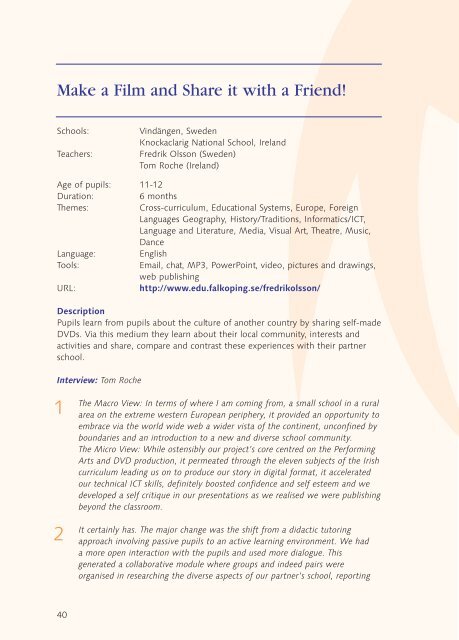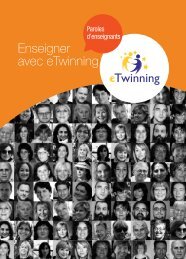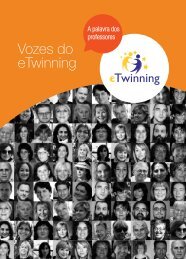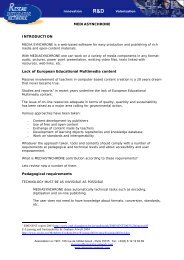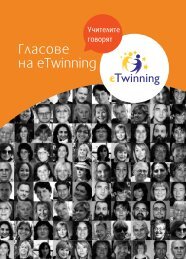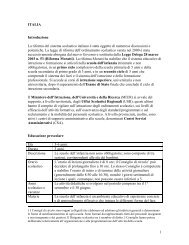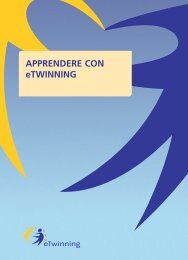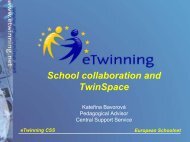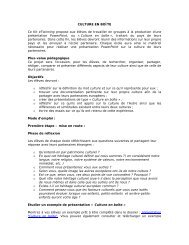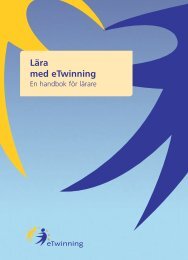Learning with eTwinning - European Commission - Europa
Learning with eTwinning - European Commission - Europa
Learning with eTwinning - European Commission - Europa
You also want an ePaper? Increase the reach of your titles
YUMPU automatically turns print PDFs into web optimized ePapers that Google loves.
Make a Film and Share it <strong>with</strong> a Friend!Schools:Teachers:Vindängen, SwedenKnockaclarig National School, IrelandFredrik Olsson (Sweden)Tom Roche (Ireland)Age of pupils: 11-12Duration:6 monthsThemes:Cross-curriculum, Educational Systems, Europe, ForeignLanguages Geography, History/Traditions, Informatics/ICT,Language and Literature, Media, Visual Art, Theatre, Music,DanceLanguage: EnglishTools:Email, chat, MP3, PowerPoint, video, pictures and drawings,web publishingURL:http://www.edu.falkoping.se/fredrikolsson/DescriptionPupils learn from pupils about the culture of another country by sharing self-madeDVDs. Via this medium they learn about their local community, interests andactivities and share, compare and contrast these experiences <strong>with</strong> their partnerschool.Interview: Tom Roche12The Macro View: In terms of where I am coming from, a small school in a ruralarea on the extreme western <strong>European</strong> periphery, it provided an opportunity toembrace via the world wide web a wider vista of the continent, unconfined byboundaries and an introduction to a new and diverse school community.The Micro View: While ostensibly our project’s core centred on the PerformingArts and DVD production, it permeated through the eleven subjects of the Irishcurriculum leading us on to produce our story in digital format, it acceleratedour technical ICT skills, definitely boosted confidence and self esteem and wedeveloped a self critique in our presentations as we realised we were publishingbeyond the classroom.It certainly has. The major change was the shift from a didactic tutoringapproach involving passive pupils to an active learning environment. We hada more open interaction <strong>with</strong> the pupils and used more dialogue. Thisgenerated a collaborative module where groups and indeed pairs wereorganised in researching the diverse aspects of our partner’s school, reporting40


